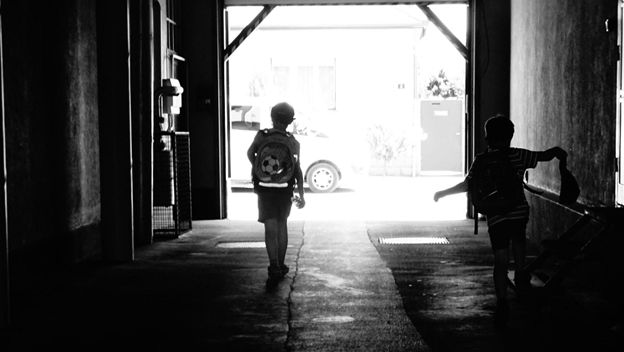By Carolina Lenzo

Whether employed or volunteering in a school, camp, tutoring center or any other avenue involving kids, those working with youth must prioritize their safety, which includes being aware of and identifying potential instances of exploitation and abuse.
Working at a summer camp for underserved children this summer, I was always intentional, thanks to my training at LifeWay, to ensure that the kids whom I was tutoring and teaching were safe and protected, taking into consideration how important it is for anyone who is working with youth to be prepared if a child comes to them with concerning information.
There are multiple essential skills and areas of expertise an educator must have in order to protect the children in their care. We’ve gathered some essential resources here:
1. Understanding Mandated Reporting
Mandating reporting means that people working with youth must immediately make a report or cause a report to be made when there is reasonable cause to suspect abuse or neglect of children. Once a report has been filed, a report is connected with a child protective specialist.
In the state of New York, reports must be made to the NY State Central Register Mandated Reporter Hotline, or through a call to 911 if there is an immediate threat of danger to a child.1 Doctors, nurses, teachers, police officers and child care center workers are mandated reporters, as New York State law requires them to report suspected child abuse and neglect. This is essential to know when you are in a position that includes child care, such as educating youth or even working at a summer day camp.
2. Identifying Essential Hotlines
There are hotlines for educational and daycare providers to use in case of emergencies.
The Administration for Children’s Services (ACS) Mandated Reporters Hotline: 1(800) 635-1522
ACS protects New York City’s kids through child welfare, juvenile justice, and early care and education services. Their number is essential to know if you work with youth.2
Child Protective Services (CPS): 1 (800) 342-3720
CPS is an agency that is required to investigate child abuse and maltreatment reports, to protect children from further abuse or maltreatment, and to provide rehabilitative services to children, parents and other family members involved.3
3. Training for Different Scenarios with Children
Agencies such as the National Child Traumatic Stress Network and the National Child Advocacy Center offer presentations about assessment, engagement, and interventions for families who are suspected of child abuse.4 Likewise, the Children’s Trust Fund Alliance provides a toolkit to prevent and identify child abuse and neglect.5 These are just a few examples of accessible tools that are available free of charge.
4. Knowledge of Red Flags of Child Abuse
Observing the behaviors of the kids one works with is important; but in order to fully assess a situation, one must first be aware of the red flags indicating potential abuse.
Red flags include:6
– Withdrawal from friends and regular activities
– Change in school performance and behavior
– Depression, anxiety or unusual fears
– Frequent absences
– Self-harm
– Sleep problems and nightmares
– Unexplained injuries (broken bones, bruising)
– Genital pain, bleeding or injury
Of course, these red flags do not always indicate a case of abuse, but such behaviors are warning signs of a potentially abused or neglected child.
Overall, as educators and protectors of the next generation, those working with youth must be aware of how to protect, prevent and distinguish between child abuse and neglect.
1 https://www1.nyc.gov/site/acs/child-welfare/mandated-reporters.page
2 https://www1.nyc.gov/site/acs/child-welfare/how-to-make-report.page
3 https://ocfs.ny.gov/programs/cps/
4 https://www.childwelfare.gov/topics/can/identifying/training/
5 https://ctfalliance.org/building-healthy-communities/#CommunityToolkit
6 https://www.mayoclinic.org/diseases-conditions/child-abuse/symptoms-causes/syc-20370864
